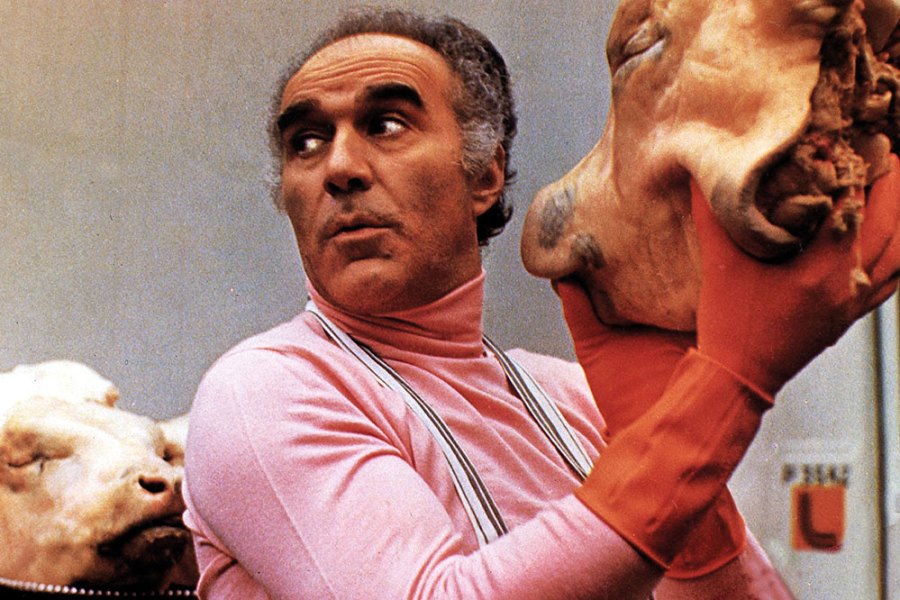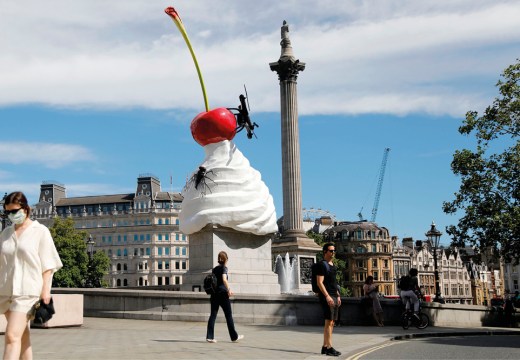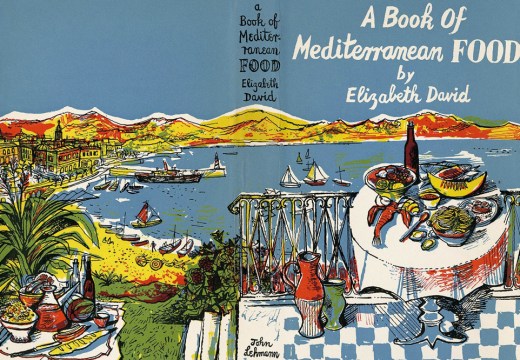From the May 2023 issue of Apollo. Preview and subscribe here.
Few films have provoked such revulsion as La Grande Bouffe (1973). In the wake of its premiere at the Festival de Cannes, which took place 50 years ago this month, audience members who had stayed the course booed and heckled the film’s director, Marco Ferreri, as he took to the stage with the cast. One critic walloped Ferreri on the nose, or so New York Magazine reported, resulting in ‘the two of them rolling on the floor in near-mortal combat’. Ingrid Bergman, president of the festival jury that year, is said to have been physically sick after the screening.
Ferreri had unveiled a nihilistic fable, in which four jaded middle-aged men – a pilot, a judge, a chef patron and a television producer – gorge and screw themselves to death in a decrepit villa in Paris, assisted by three prostitutes (who eventually depart in disgust) and a libidinous school teacher (who does not). To the film’s defenders it was a caustic satire on the hedonistic dereliction of the bourgeoisie: ‘we handed people a mirror and they didn’t like seeing themselves in it,’ said the actor Philippe Noiret, who played the judge. To its detractors it was nothing more than a pageant of perversity, a procession of feeding and farting and fornicating – and sometimes all at once. The moral campaigner Mary Whitehouse declared it ‘the most revolting film I have ever seen’.
Ferreri certainly knew how to offend. He had persuaded four stars of French and Italian cinema – Noiret, Michel Piccoli, Marcello Mastroianni and Ugo Tognazzi – to play against type as grotesque characters who shared the actors’ own first names, as though they were performing as themselves. Here was Mastroianni, the charming anti-hero of post-war Italy, drenched not with his familiar ennui but with sewage from an exploding toilet. All the characters remained obstinately motiveless in their mission to scoff themselves into oblivion. The film’s length, at over two hours, seemed designed to exhaust the comic momentum of its inaugural feasting scenes. And the script insistently thrust together high and low: Philippe raising Brillat-Savarin over breakfast; Michel declaiming Hamlet while he brandishes a calf’s head.
La Grande Bouffe retains its capacity to nauseate. If anything, its spectacle of sexual contempt and wanton consumption has become even more unnerving at a time when both are subject to due scrutiny – the former not least in the knowledge of Ferreri’s methods of working with female actors, which included cajoling the young Andréa Férreol into gaining 25 kilos before he granted her the role of the school teacher. But there is also, more simply, the unfading torture of sitting through its concentrated, repetitive excess, its continuous forkfuls of pasta and purée and breast-shaped blancmange, its fanfares of flatulence. As the critic Roger Ebert wrote on the film’s release, La Grande Bouffe is ‘more of an experience than a treatise’.
And yet. There is something joyful in the film’s handling of food, in its outrageous plenty and its procession of ever more complex dishes to the screen – culminating in a Panthéon-domed pastry case crammed with goose, duck and volaille pâté and in those blancmange breasts. Film-makers had revelled in the theatre of food in the past – think of the roast pig that discharges its stuffing of cooked meats in Fellini’s Satyricon (1969) – but none had fastened on it in such detail. Perhaps that is why the chef Fergus Henderson describes La Grande Bouffe as ‘the greatest food film ever’ – citing a scene in which the protagonists slurp on marrow bones as the encouragement for his serving them at his St John Restaurant in London.
Ferreri was himself both gourmet and gourmand, a man so fond of food that he had sought help for his overeating from a specialist clinic in Switzerland in the early 1970s. The inspiration for the film was a sybaritic dinner with actor friends, including the skilled amateur chef Tognazzi, who would play the chef in the film. In a sense La Grande Bouffe might be seen as a love letter in poisoned ink – or at least a satire in which the director recognised himself among its targets.
The making of the film underscored that complicity. On set was the actor and food writer Giuseppe Maffioli, who prepared the dishes and their display. The vast quantities of food required for the shoot were supplied by the high-end Parisian delicatessen Fauchon, with vans arriving early in the morning – as they do on screen – to deliver for the day’s filming. One technician, in an interview in 2020, recalled a typical consignment: ‘three roast turkeys, five kilos of bread, one kilo of caviar, one litre of crème Chantilly, one pièce montée, one side of beef, three strawberry tarts, six foies de canard, one marmite of flageolet beans…’.
The actors ate as they filmed, stuffing themselves every morning before the food spoiled under the lights. Noiret alone spat it out between takes. For the four men and their ringleader, at least, it must have been fun – until it started to feel like too much.
From the May 2023 issue of Apollo. Preview and subscribe here.
Unlimited access from just $16 every 3 months
Subscribe to get unlimited and exclusive access to the top art stories, interviews and exhibition reviews.














![Masterpiece [Re]discovery 2022. Photo: Ben Fisher Photography, courtesy of Masterpiece London](http://www.apollo-magazine.com/wp-content/uploads/2022/07/MPL2022_4263.jpg)
It’s time for the government of London to return to its rightful home